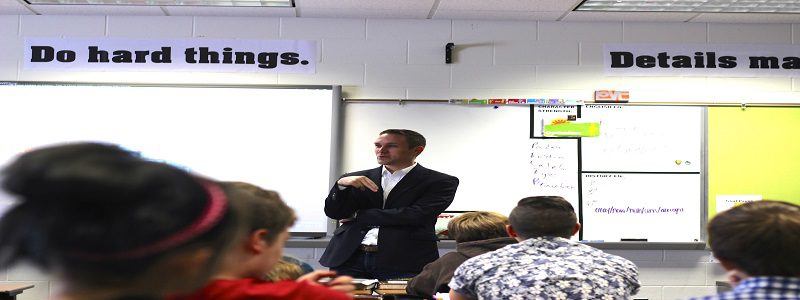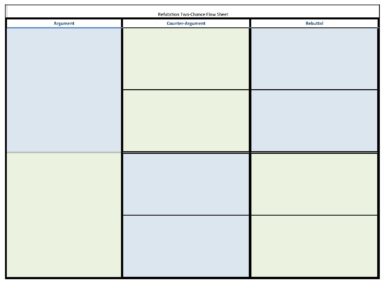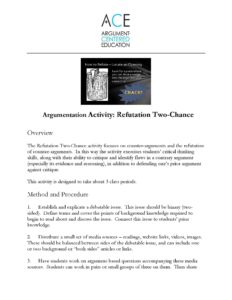
‘The Debatifier’ and Refutation Two-Chance Featured on Popular Ed Blog
“The Debatifier” and the ACE activity Refutation Two-Chance were featured last week on the popular (35,000+ readers) and smart education blog run by Michigan high school teacher and writer Dave Stuart Jr.
The blog post recounts Dave Stuart’s implementation experience with Refutation Two-Chance.
- A refutation standard invokes rigor and difficulty in a way that has important academic value for students, but that pushes students out of their comfort zone and requires establishing and upholding a challenging norm.
- Tracking (or “flowing”) arguments is an essential technical operation in the process of argumentative refutation. In order to respond to each argument made in a debate or argument-based discussion, there has to be a record of those arguments. And in order to know whether and how argumentation has been addressed and developed, arguments have to be tracked.

- Introduction of refutation to students has to be scaffolded. Students will need refutation modeled, but then they will need to gradually move through a guided instruction stage before they attain autonomy in the skill. Of course, they will progress through this stage at personal, differentiated rates, requiring varied levels of support.
- Teachers have a complex role in the Refutation Two-Chance activity, because they have to track arguments (preferably on a projector, smart board, or low-tech board), moderate the activity, monitor engagement levels, and evaluate student performance.
These are acute insights, engendered through self-reflective practice, and articulated by a sophisticated education practitioner-theorist. I also happen to agree completely with all of them.
Incidentally, if you haven’t checked out Dave Stuart’s blog, I strongly encourage you to do so (and not because DS says nice things about Argument-Centered Education). This education blog covers a range of teaching topics — from a framework to guide curriculum decisions, to ways to stay motivated as a teacher, to practical strategies for literacy instruction — unified by a unique, and serious but not somber, sensibility.


